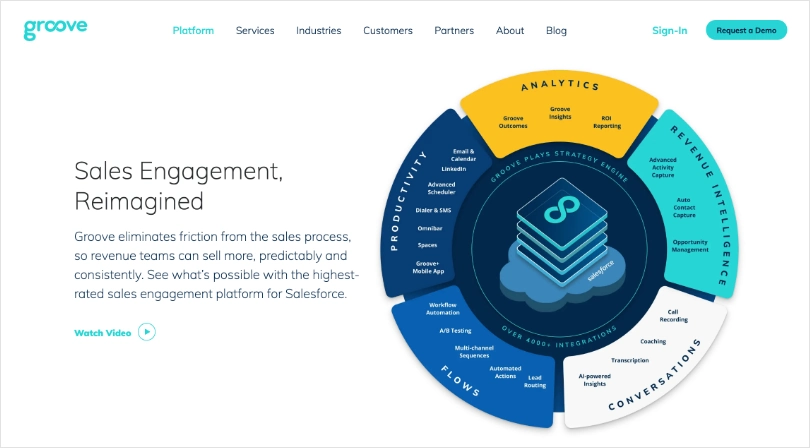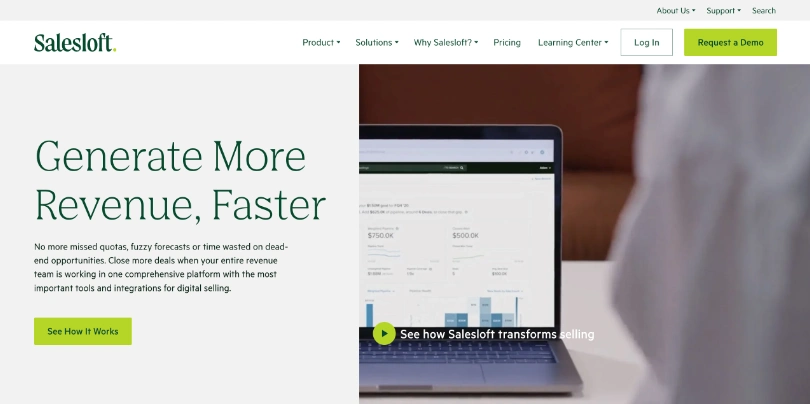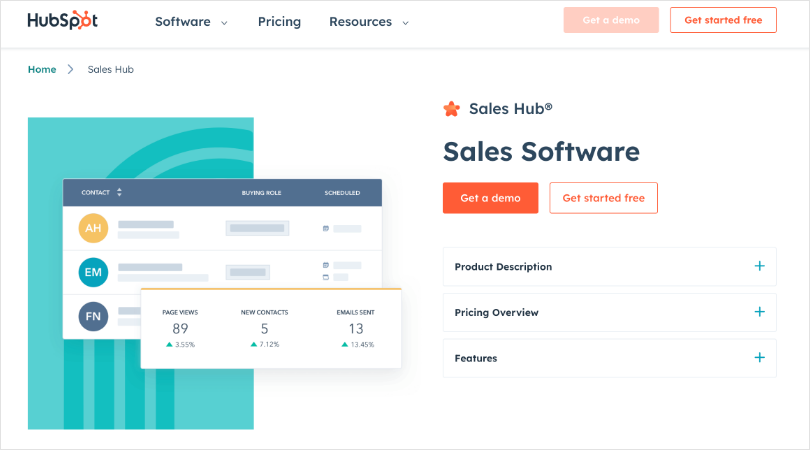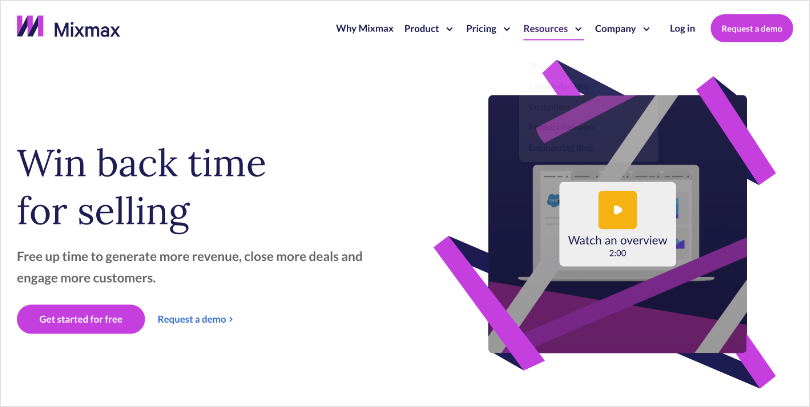You’ve just sent an important email to a potential customer and eagerly await their response. Hours go by, and you start to wonder if they’ve even opened your email.
Did it end up in their spam folder? Did they simply overlook it? Or worse yet, did they delete it without reading it?
We’ve all been there. The uncertainty of whether or not your email has been read can be incredibly frustrating. Fortunately, there’s a way to ease your mind and gain insight into the recipient’s behavior- email tracking.
Knowing when and how the target audience interacts with your content is crucial. It improves the performance of upcoming campaigns and saves you from shooting arrows in the dark.
Discover the ins and outs of email tracking and learn how to integrate it effectively into your marketing strategy. Also, understand the role of email tracking software in this process and find a detailed comparison of the top solutions that you can invest in. Let’s get right into it.
In a Nutshell
- Email tracking lets you track if and when the recipient has opened your email, clicked on any links, or downloaded any attachments.
- Closely monitoring such metrics will help you optimize future campaigns and enhance profitability.
- In order to see actual results from email tracking, you need the assistance of a powerful tracking tool. Moreover, you must utilize the collected data to identify patterns and improve business performance.
- In this blog, we cover how to track emails, list the most insightful email metrics, and compare the 5 best software options for email tracking that are worth your consideration.
What is Email Tracking?
Email tracking involves monitoring the engagement data for sent emails and leveraging it to improve future campaigns. This includes data points such as open rates, the number of clicks, attachment downloads, locations, etc. It is a key business undertaking that provides you with contextual insights into the performance of email campaigns.
Such tracking data aids visibility into your customer’s behavior, helping you make data-driven decisions to grow your business. You can also use it to optimize your overall engagement strategy and enhance organizational productivity.
The Mechanics Behind Email Tracking
The purpose of email tracking is to improve email communication and measure the effectiveness of email campaigns. Here are some ways how it can work:
Tracking Pixel
A common method used to track emails involves embedding a tiny image (1 pixel in size) in the email. When the email is opened, the image is automatically loaded. This sends a request to the sender’s server, including their IP address, device type, email client, time, location, etc.
Unique Links
Adding traceable links in emails is another effective way to track emails. Such links are unique and contain a tracking code that identifies the recipient. When the recipient clicks on the link, the tracking code is sent back to the sender’s server, and the sender is immediately notified about the recipient’s interaction with the email.
Read Receipts
Some email clients offer built-in email tracking functionality. This involves enabling read receipts for emails sent to a recipient using the same client. However, since the method requires authorization from the recipient and is limited to the same email client users, it is used less frequently than other methods of email tracking.
Tracking Emails: A Step-by-Step Guide
Email tracking is pretty simple when you have access to the right software and a tactical plan in place. Here’s how you can get started with email tracking in a jiffy.
Step 1: Determine Relevant Metrics
The first step is to identify the email metrics that carry the most value for your business. Determine your goals and find metrics that should be tracked in order to meet these goals. This could include the reply rate, social sharing rate, click-to-open rate, etc.
Step 2: Choose a Functional Tracking Software
The next step involves finding a reliable tracking solution that offers advanced analytics options and matches your unique business needs. The tool must be easy to use and should seamlessly integrate with your existing email marketing process.
For instance, a tool like BIGContacts offers comprehensive dashboards and reports for email tracking.
This makes it easy to keep track of relevant metrics associated with your campaigns and share key insights with other team members.
Read More: Best Email Tracking Software For Your Business
Step 3: Lay Guidelines for Follow-Ups
Email tracking can provide valuable information about how your recipients are engaging with your emails. Use this information to guide your follow-up strategy. For example, if you notice that a recipient has opened your email multiple times but hasn’t responded, you may want to send a personalized follow-up email to encourage a response.
Step 4: Analyze and Adjust
After tracking your emails for a period of time, it’s important to analyze the results and make adjustments as needed. Look for trends in your data and adjust your email strategy accordingly. You can also use industry benchmarks to evaluate the performance of your email campaigns.
The Benefits of Email Tracking
Since 2017, there has been a continuous increase in the global number of emails sent and received daily, reaching a total of 333.2 billion in 2022.
This demonstrates how deep-rooted emails are in the communication landscape.
With email tracking, you can ensure that your emails stand out in this competitive environment. Use the gathered insights to personalize your outreach efforts and make them more relevant for your prospects and customers.
Email tracking data can help you refine your messaging, optimize subject lines, and improve your overall strategy to make more conversions. Following are some significant benefits of tracking an email:
Drive More Impactful Campaigns
Email tracking helps determine the most effective time and content for your upcoming campaigns. With contextual tracking, you can discover more about customers and drive more impact with future campaigns.
Enhance Deliverability
Email tracking can provide insight into which emails are being delivered to recipients’ inboxes and which ones are being filtered into spam folders. By monitoring deliverability rates and taking steps to improve your sender reputation, you can increase the effectiveness of your campaigns.
Follow-Up Effectively
You might be targeting a large number of people with your emails. However, it is highly likely that only a subset of this audience will be interested in your services. Email tracking lets you identify which prospects have engaged with your emails, so you can prioritize your follow-ups accordingly.
Read More: Follow-up Emails to Clients: Surefire Ways to Get Responses
Identify Preferences
Email tracking can help identify what resonates with the audience. For example, if recipients consistently click on links to blog articles but ignore links to product pages, this indicates a preference for informational content.
Improve Segmentation
Email tracking lets you improve your segmentation strategies by analyzing the behavior of different segments and using the collected data to increase the relevance of the content. For instance, a group of recipients consistently opening emails about a particular product or service indicates a shared interest.
How to Drive Growth With Email Tracking
Email tracking lets you see when an email is opened, how long it was open for, if any links were clicked, and if it was forwarded to someone else. This information can help you gauge the effectiveness of your email campaigns, understand your recipient’s behavior, and ultimately improve your communication strategy.
However, merely tracking these numbers isn’t enough. You must leverage the collected data effectively and use it to improve your future decisions. Here are some ways how you can make use of email tracking to grow your business:
Find Hot Leads
Identify which leads are most engaged with your content. For example, if a potential customer has opened and clicked on multiple emails, they may be more receptive to a sales call.
Refine Marketing Campaigns
Determine which messages resonate the best with your audience and which ones fall flat. Find out which emails are garnering the most attention from your target audience and use this data to optimize future marketing efforts.
Improve Customer Retention
Identifying when a customer has stopped engaging with your emails can be an early warning sign of potential churn. Use this information to proactively reach out to the customer and address any concerns they may have.
Read More: Customer Retention Software: 13 Must-Try Options
Monitor Team Performance
If you have a sales or customer service team that uses email to communicate with customers, email tracking can help you monitor their performance and identify areas for improvement.
10 Power Email Metrics to Track
With all this buzz around email tracking, we come to an important question-
Which email metrics are worth your time?
Here are the 10 best email metrics to monitor the effectiveness of an email marketing campaign.
1. Open Rate
This is the number of people who opened your email. A higher open rate indicates that your subject line was engaging and relevant, prompting your audience to take action.
2. Click-Through Rate (CTR)
This measures the number of clicks on a link within your email divided by the number of emails sent. This measures the effectiveness of the content included in the email.
3. Conversion Rate
This measures the number of recipients who completed a desired action after clicking through from your email. This could be anything from making a purchase to signing up for a newsletter.
4. Bounce Rate
This is the percentage of emails that were undeliverable and returned to the sender. A high bounce rate could indicate issues with your mailing list or the quality of your content.
5. Unsubscribe Rate
This rate measures the number of people that unsubscribed from your email list after receiving the email. It’s important to monitor this metric to ensure that you’re not losing too many subscribers.
6. Forward Rate
This measures the number of recipients who forwarded your email to others. A high forward rate indicates that your content was engaging and shareable.
7. Spam Complaint Rate
This tracks the number of recipients who marked your email as spam. A high spam complaint rate can damage your sender’s reputation and impact deliverability.
8. List Growth Rate
This measures the rate at which your email list is growing. It’s important to monitor this metric to ensure that you’re continuously reaching new potential customers.
9. Engagement rate
This measures the level of engagement your email is receiving from the audience. It’s a combination of open rate, click-through rate, conversion rate, and other engagement metrics.
10. Revenue per email
This measures the amount of revenue generated per email sent. It’s an important metric for businesses looking to drive sales through their email marketing efforts.
5 Best Email Tracking Software
The following email tracking software can be a great addition to your suite of marketing tools. Choose the most appropriate solution out of these by comparing them against your unique business needs.
1. BIGContacts
BIGContacts CRM brings all email communication to one place, saving you from spending hours searching through your inbox. Its powerful email analytics capabilities help track relevant metrics, such as open rate, click-throughs, etc. The clean UI, extensive customization options, and reliable customer support make BIGContacts an excellent choice for businesses across multiple industries and sizes.
Key Features:
- Get automated alerts and reminders for email activity to get in touch at the right time.
- Generate detailed reports to track the most relevant email performance metrics.
- Create segmented mailing lists and track the performance of individual segments to drive better performance.
- Save high-performing emails as templates for future use.
- Find all emails in one place to keep track of previous interactions.
What is Unique About It:
- Easy UI, email templates, 247 delightful customer support
Pricing:
- Forever free plan for startups with 100 contacts. Paid starts at $9.90/month with a 15-day free trial.
2. Groove
Groove immediately informs you when customers engage with your emails, so you can take timely action. The tool also offers conversational intelligence capabilities, enabling you to optimize your interactions with prospects and customers. With Groove, you can stay updated about the open status of your emails effortlessly.
Key Features:
- Use the Groove extension to access a feed of all tracked emails.
- Track email opens and clicks from within your inbox.
- Receive instant notifications for email engagement.
- Create a blocklist to prevent certain emails from getting tracked.
- View all unopened emails from a single place, making it easier to take further action.
What is Unique About It:
- Email categorization, automation & notifications
Pricing:
- Contact for pricing.
3. Salesloft
Track views, clicks, and replies for emails to improve the effectiveness of campaigns with Salesloft. The tool lets you automate busywork and increase organizational efficiency. With powerful engagement analytics, Salesloft lets you make accurate business decisions. You can also track or block email opens for certain IP addresses and email domains.
Key Features:
- Get real-time notifications for email activity such as replies or opens.
- Use 1×1 pixel with emails to enable open and view tracking.
- You can enable email tracking by default.
- Built-in conversational intelligence capabilities enable you to improve email performance.
- Create domain exclusion lists to keep replies from specific domains from getting logged into the system.
What is Unique about it:
- Create cadence, playbooks, and automation sequences
Pricing:
- Get in touch with the company.
4. Hubspot Sales Hub
HubSpot Sales Hub is an effective solution for businesses to drive better outreach efforts and track their performance effortlessly. The tool effectively tracks the emails sent through Gmail and Outlook, so you can follow up with clients at the right time. All the emails are stored in a centralized repository, making it easier to personalize upcoming interactions.
Key Features:
- Get notified as soon as the recipient opens your emails or clicks within.
- Set up a series of automated actions to be performed based on the collected data.
- Use predictive lead scoring to identify high-value prospects based on their engagement.
- Keep track of multiple clicks on a link and attachment downloads.
- Access all contact data in one place so you can personalize upcoming emails.
What is Unique About It:
- Sales engagement, conversation intelligence
Pricing:
- Starts from $30/month
5. Mixmax
Mixmax is an engagement tracking solution that helps you gather actionable insights into the effectiveness of email campaigns. This tool is a powerful add-on for Gmail that helps you boost the response rate for your emails. It provides real-time visibility into who is opening or clicking on the content in your emails.
Key Features:
- Get real-time alerts for email activity on Slack or email.
- Save emails that perform well as templates for future usage.
- Track engagement levels for emails with interactive dashboards.
- Improve efficiency by creating automated sequences.
- Automate actions based on email activity.
What is Unique About It:
- Automated rules & sequences, Gmail sidebar
Pricing:
- Free plan available
- Paid plans start from $29/user/month
Drive Profits With End-to-End Email Tracking
If you’re still sending out emails and simply hoping for the best, it might be time to revamp your strategy.
Incorporate email tracking into your marketing strategy to make better utilization of your marketing dollars.
When you track your emails, you can not only obtain necessary numbers like open or conversion rates but also get a contextual understanding of how customers engage with your outreach efforts. This can help you undertake a data-driven approach to customer communication, thereby enhancing your marketing, sales, and support interactions.
To reap maximum benefits, you require a powerful tool like BIGContacts that facilitates end-to-end tracking. Such a platform will provide you with complete visibility into shared emails, ensuring that your business communication never strays off track.
Frequently Asked Questions
How does email tracking improve lead generation?
Email tracking can be a powerful tool for lead generation because it allows you to monitor how your emails are being received by your target audience. By analyzing open rates, click-through rates, and response rates, you can get a sense of which prospects are most interested in your product or service and follow up with them accordingly.
What are the most common use cases for email tracking?
Email tracking is commonly used for sales and marketing purposes to track the engagement of email campaigns with customers or prospects. This data can help optimize email content, timing, and frequency for better results.
Email tracking is also used by customer support teams to track the status of their customer’s inquiries or complaints and ensure timely responses.
FREE. All Features. FOREVER!
Try our Forever FREE account with all premium features!











